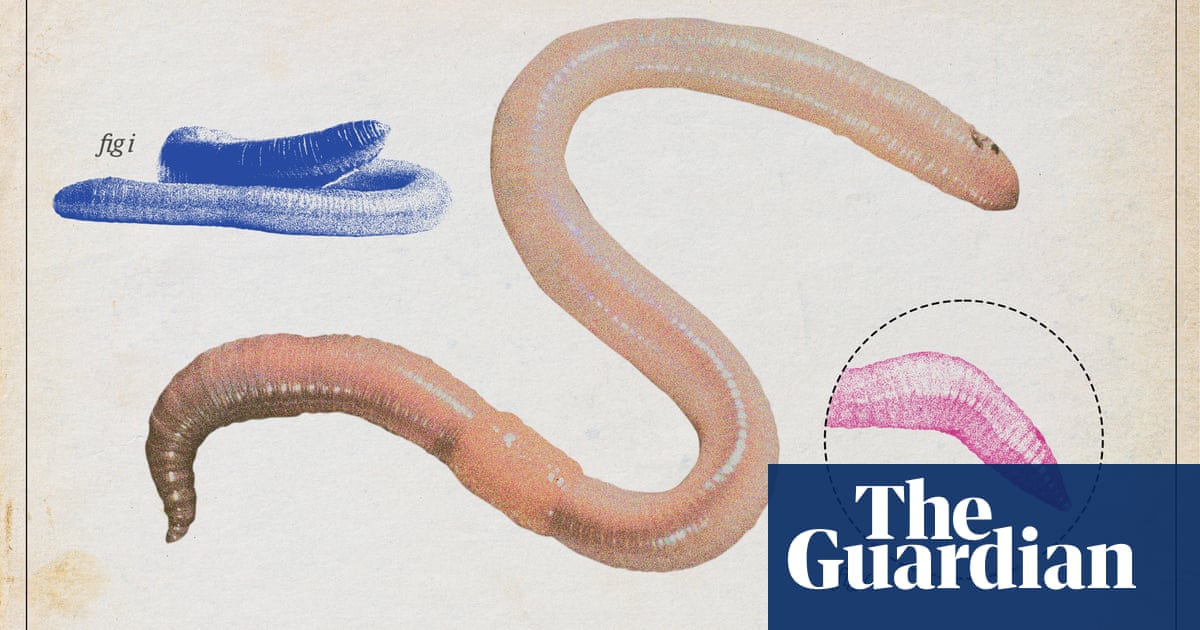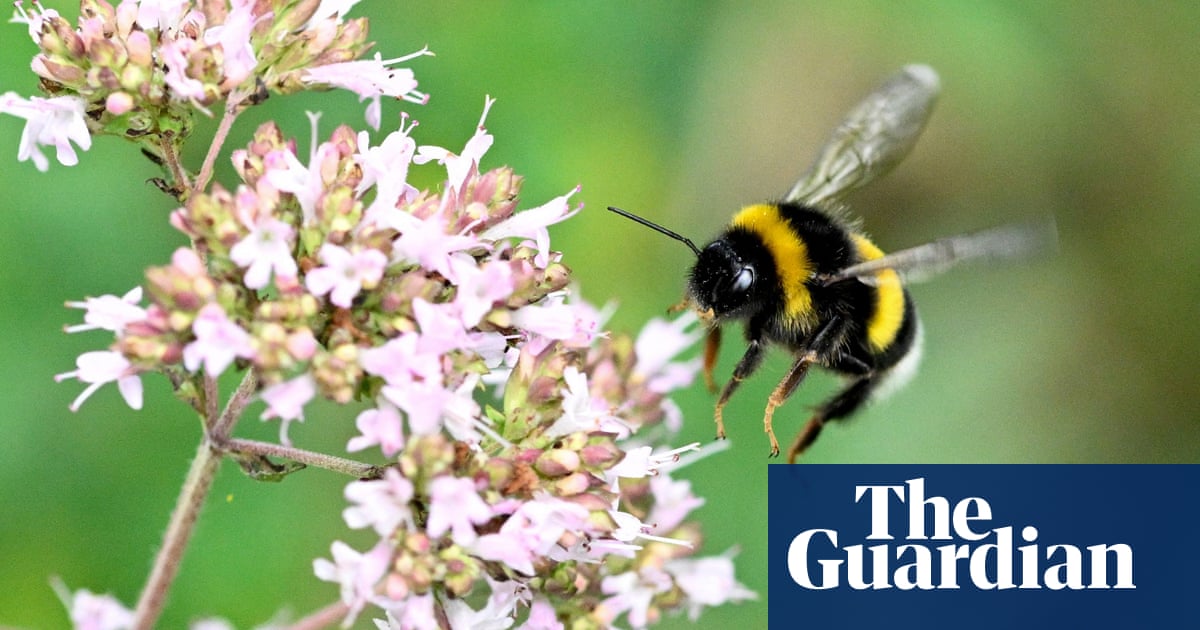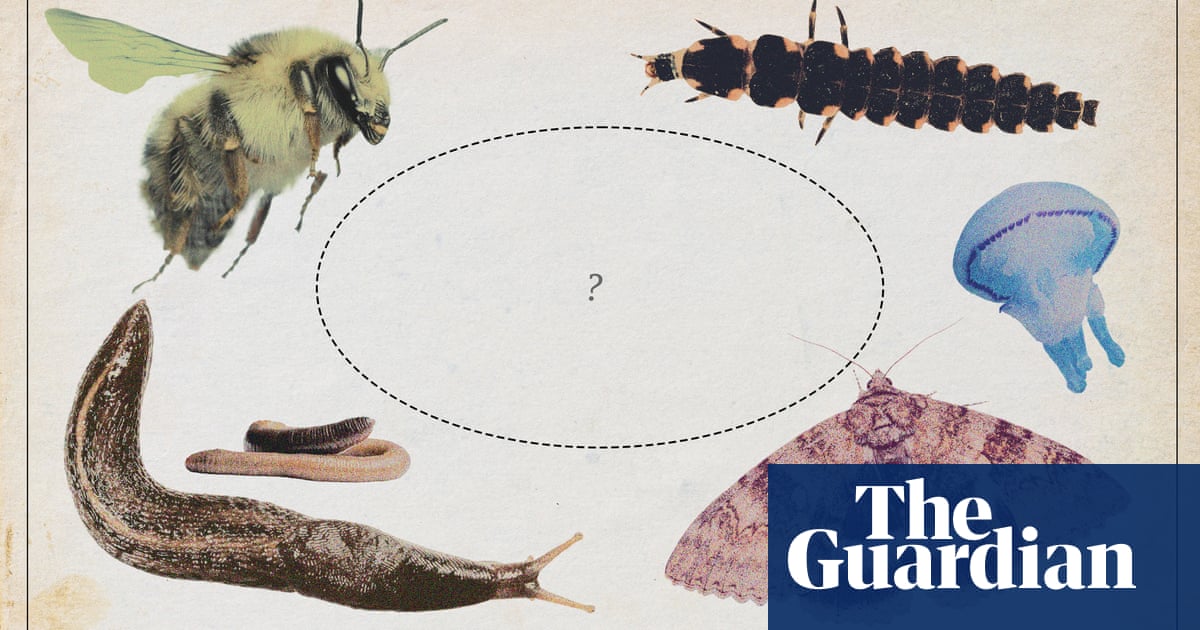
It’s a political earthquake! The common earthworm, the soil-maker, food provider and grand recycler, is the landslide winner of the inaugural UK invertebrate of the year competition.
Lumbricus terrestris, also known as the lob worm, dew worm and nightcrawler, took a mighty 38% of the popular vote after readers nominated it to be added to the shortlist for the Guardian contest.
The rare and endangered shrill carder bee demonstrated the popular affection for bumblebees by coming second with 15% of the vote while the romantics’ choice, the glowworm, narrowly beat the unexpectedly popular distinguished jumping spider into bronze medal position with 9% of the vote.
Chris Packham, whose plea for the disrupter of the shortlist, the Asian or yellow-legged hornet made the front page of the Daily Star, said: “Through constant wriggling and extraordinary ecological commitment it’s great to see the earthworm take top spot. Although I suspect vote rigging by blackbirds, badgers and moles.”
The nature writer and campaigner Dr Amy-Jane Beer said: “Stop the press, here’s an award that really means something! In a media obsessed with the rare and beautiful, for the overwhelming importance of a cold, slimy, mostly unseen creature long associated with a kind of mute, spineless, humility to receive public recognition is a big deal.”
The invertebrate charity Buglife also welcomed the earthworm’s triumph. “It’s great news,” said David Smith, Buglife’s advocacy and social change officer. “These ecosystem engineers go about their lives often unnoticed yet are vital for producing the food we eat and easing the impacts of flooding. Unfortunately, earthworms are under threat from multiple sources including chemical use, invasive species, and intensive land use, hopefully with its new title, the public will support these vital invertebrates and take action to help them thrive.”
“A man may fish with the worm that hath eat of a king, and eat of the fish that hath fed of that worm,” declared Hamlet, baffling Claudius the King in Shakespeare’s play but hailing the recycling prowess of the earthworm.
Earthworms can bring 40 tonnes of soil to the surface per hectare a year in Britain. Their usefulness is increasingly hailed in an era where regenerative farmers and many others are paying new attention to soil health.
Worms make soils less prone to flooding in winter and less baking hard in summer, they boost microbial activity and, of course, are vital in supporting plant growth, including the crops that feed us.
As well as being important, earthworms lead long (up to six years in captivity) and wondrous lives, and their charisma is well appreciated by those great connoisseurs of the living world, children. One of many readers who nominated the earthworm was Lily, four, who appreciated their “soft” feel in the hand and their general wiggly appeal.
The common earthworm appears on the surface – especially during damp and wet times, hence its other names, dew worm and rain worm – and is one of those precious invertebrates who we can see almost daily, and help too. I always feel better about myself if I stop mid-stride and rescue a stranded worm from the pavement or road.
Unfortunately, like so many other common invertebrates, earthworms are disappearing: the UK’s first national assessment, in 2023, found that populations are estimated to have declined by a third over the past 25 years.
It is not just on farmland where declines are occurring, probably due to pesticides and intensive ploughing, but in broadleaved woodlands – suggesting that wider factors such as climate change and pollution from animal worming including treatments for pets are driving losses.
Surprisingly the most traditionally beautiful animals on the shortlist, the swallowtail butterfly and the Clifden nonpareil moth, polled modestly, finishing in sixth and 10th place respectively.
The naturalist and author Dominic Couzens said: “There’s no doubt that the earthworm is a worthy winner, but perhaps that reflects the grey sky of our troubled times? Perhaps one day we will go with a feelgood selection, such as the sumptuously glamorous Clifden nonpareil or swallowtail?”
Bringing up the rear on the shortlist with just 0.8% of the vote was the Asian or yellow-legged hornet, an invasive species known for attacking honeybee colonies which was nevertheless championed by Packham, who made the case for tackling the biodiversity crisis rather than scapegoating one species, which humans are to blame for spreading.












